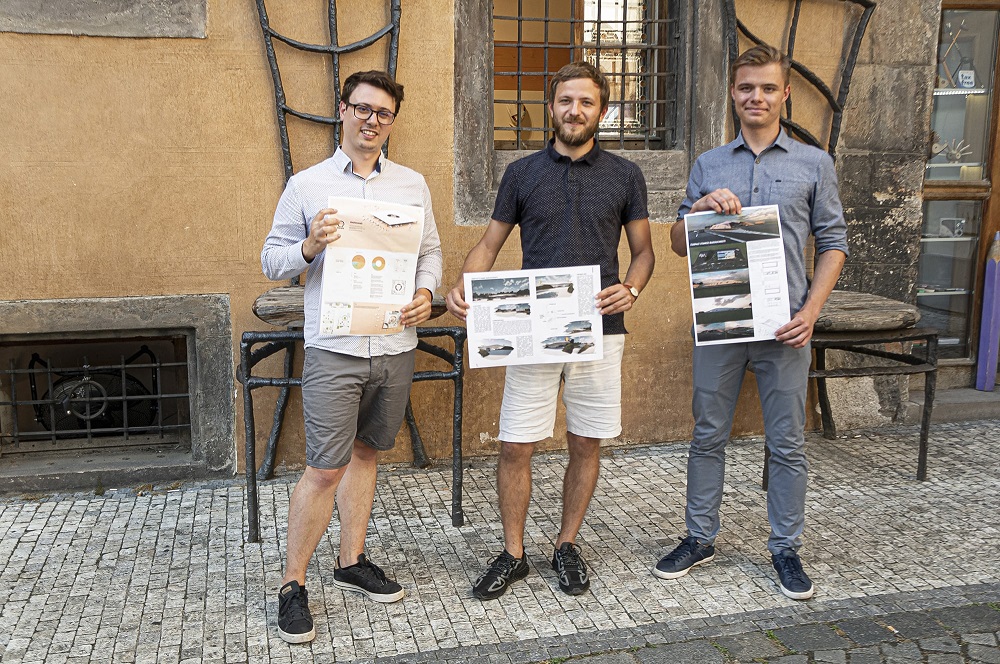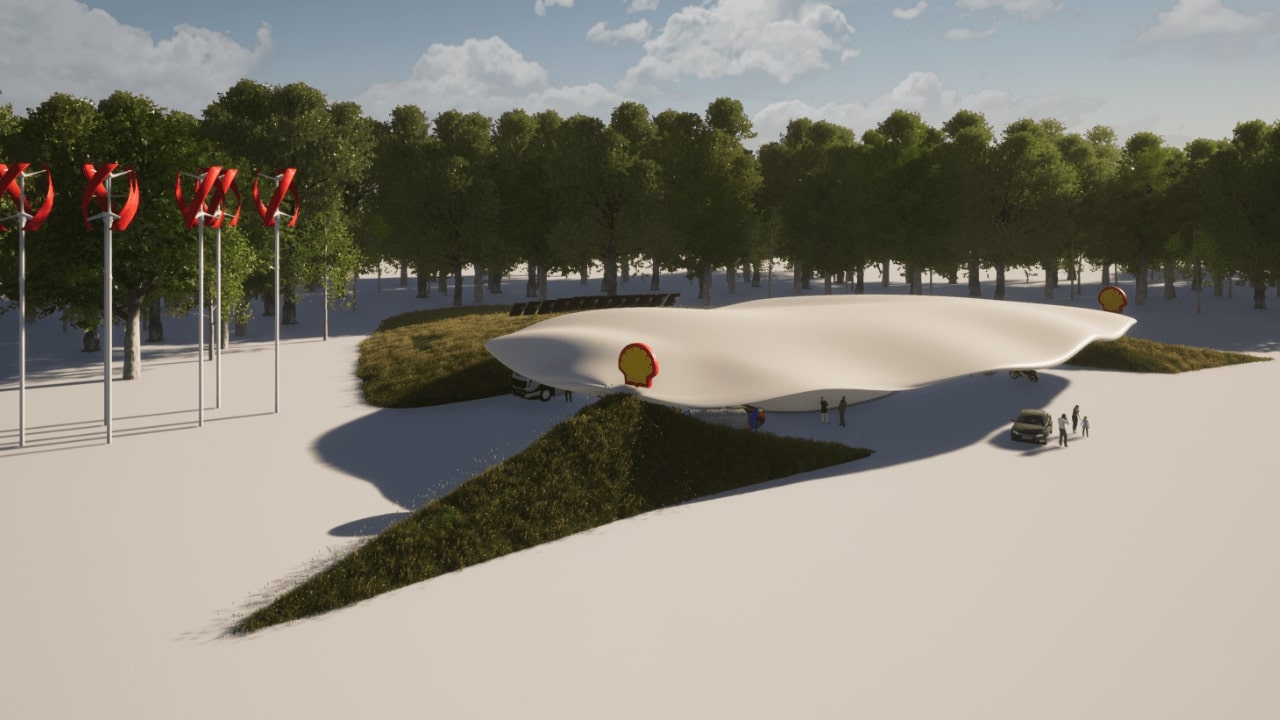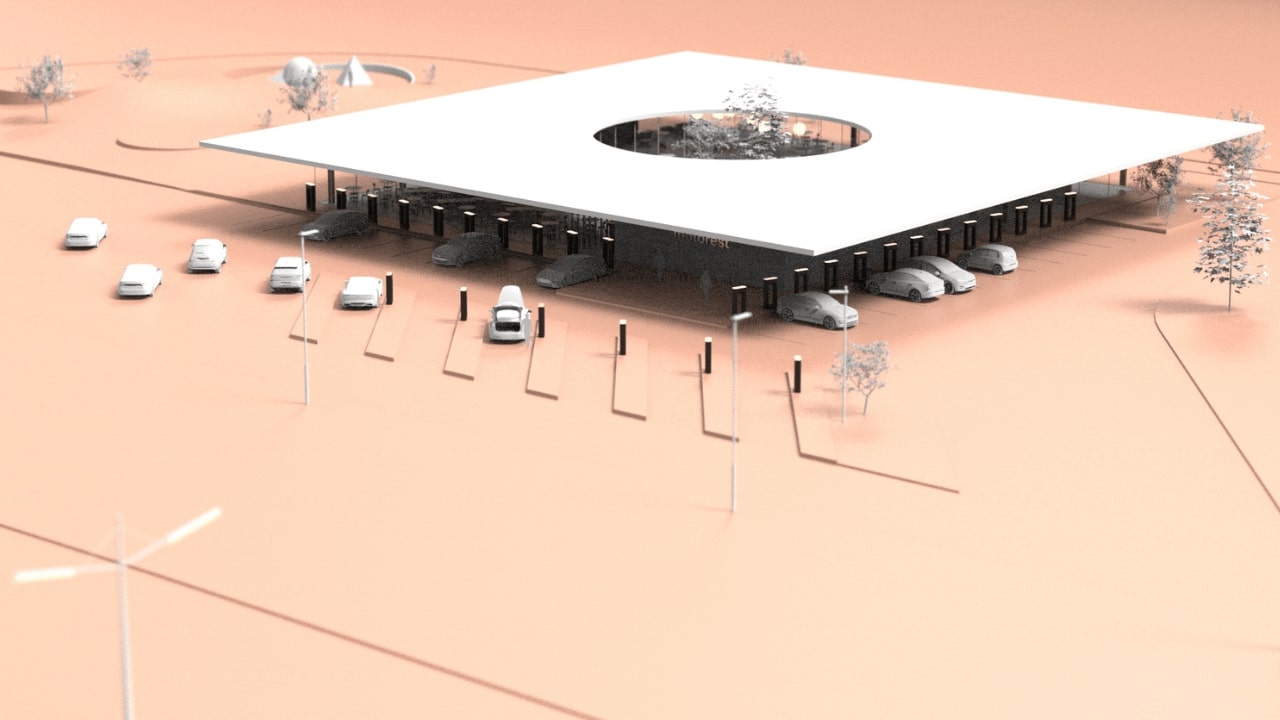
This year, Shell is marking the 30th anniversary of the opening of the first petrol station in the Czech Republic. To mark the occasion, Shell Czech Republic asked the public how we will be driving in another 30 years – at a time when Shell plans to achieve carbon neutrality. In addition, Shell also set up a competition for architecture students on the theme of The Gas Station of the Future, which was designed to give an answer to the question of what mobility will look like in 30 years' time.
One in three drivers expects to be driving an electric car in 2050. Petrol stations will become destinations for EV recharging and in addition they will become a place to meet and relax. This is how Czech motorists and young architects imagine the future.
The underlying shared public vision is that in 2050, electric vehicles will be the most common vehicles on the road. A survey of Czech drivers shows that 35 % of them will own an electric car in 2050. A further 31.5 % of respondents think they will run a car on conventional power (petrol or diesel), 14.5 % a hydrogen-powered car and 11 % intend to rely on solar power.
Similarly, 58 % of people in the Czech Republic think that petrol stations will be converted into charging points for electric cars. This was also reflected in the architectural designs. For the majority of young professionals, charging electric cars will be the main activity for which customers will seek out petrol stations.
"We are glad that people in the Czech Republic are ready to gradually switch to low-emission transport. We are ready to be a reliable partner in this area as well. In 2021, we presented our development strategy called Powering Progress, which aims to become a carbon-neutral society by 2050. This includes, for example, the development of electric mobility. By 2030, we want to operate 2.5 million charging points worldwide. As part of our network of filling stations for Czech drivers, we already offer high-speed IONITY chargers on the D1 motorway (Nupaky, Ladná) as well as chargers in 5 other locations," explains Daniel Vagaský, Chairman of the Board of Shell Czech Republic.
In their designs, the young architects worked with natural materials, ecological design and solutions that help the station to be energy self-sufficient. Visually, the petrol stations will be simple, clean, with a minimalist design, and will offer customers, above all, a place to relax.
Especially the purpose of recreation predetermines the functionality of the pumping station. The survey showed that 56 % of people think that petrol stations will be a place to meet friends and relax in 2050. Architects have included playgrounds, co-working spaces, cafes and relaxation rooms in their designs.
At the same time, 2050 will also bring new technologies and modes of transport. According to the architects, the station design should also take into account the operation of drones or autonomous cars.
"We are delighted that customer expectations of service stations as well as the visions of young architects are in line with our direction. Shell petrol stations are already gradually becoming a meeting place, a place to quickly buy basic groceries or good coffee, so they are far from being just a place for a quick fill-up," explains Jan Čapský, Shell's Director of Petrol Station Operations, about the direction of the petrol stations.
1st place: Dominik Lehnert
2nd place: Martin Sucharda
3rd place: Jakub Mendel



In February 2022, Shell launched the "Petrol Station of the Future" art and architecture competition for architecture students and graduates. The aim of the art and architecture competition was to get the view of architecture students and graduates on mobility and petrol station design in 2050. Shell launched the competition on the occasion of its 30th anniversary on the Czech market.
About the opinion poll
The quantitative survey was conducted by research agency MNForce through an online panel with controlled access to a sample of 500 respondents. Data collection took place in November 2021. The sample was representative of the 18+ population in terms of gender, age, region, and education.